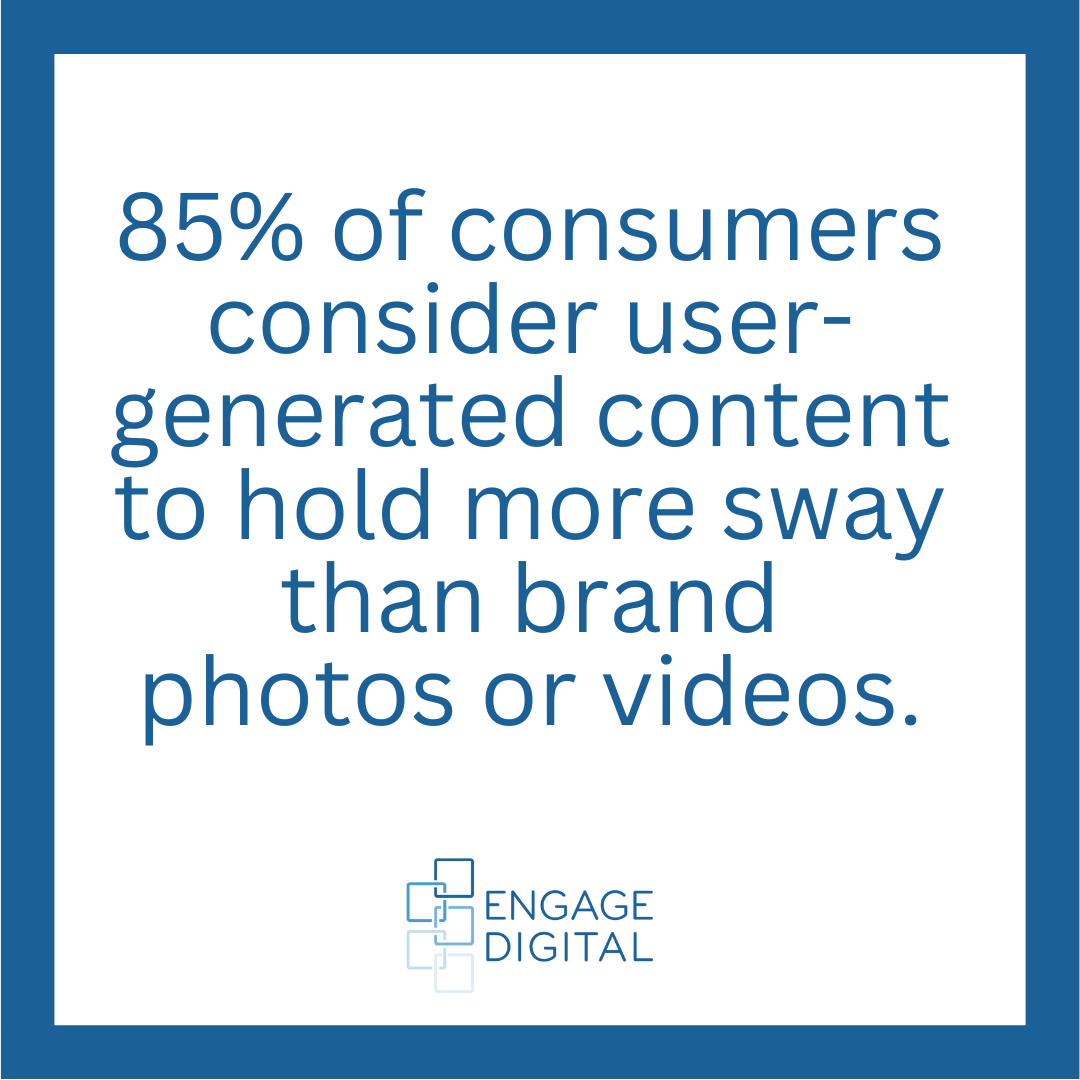Did you know that 79% of people say user-generated content (UGC) highly impacts their purchasing decisions? This staggering statistic underscores the importance of understanding the roles of UGC creators and influencers in today’s digital marketing landscape. While both UGC creators and influencers offer invaluable contributions to brands, they serve distinctly different roles. Identifying these differences can help businesses harness their unique strengths effectively.
What is a UGC Creator?
So, what is a UGC creator? A UGC creator is someone who produces content that appears natural and relatable. Unlike influencers, UGC creators specialize in creating genuine-looking content that brands can utilize on their marketing channels. They typically do not have large audiences. The value of their content lies in the authenticity and relatability it brings to a brand’s marketing efforts.
Brands often turn to UGC creators to produce testimonials, product demonstrations, or real-life usage scenarios that resonate more deeply with consumers. UGC creators are paid based on the content they provide, not its performance. This type of content serves as a powerful tool for brands looking to build trust and foster genuine connections with their audience. By leveraging UGC, brands can create more relatable and engaging marketing campaigns that truly speak to their target market.
What is an Influencer?
Influencers are individuals with a substantial social media following. Traditionally, micro-influencers have audiences of at least 25,000 with solid engagement. Regular influencers boast followers in the hundreds of thousands and often over one million. However, the industry has shifted to metrics focusing more on reach and ROI and less on the number of followers. Influencers actively engage with their audience by sharing branded content directly on their feeds. They build trust with their followers, making their endorsements highly impactful. This trust often drives significant purchasing decisions among their followers.
Their role goes beyond mere promotion. Influencers curate content that aligns with their personal brand, adding an extra layer of authenticity to their endorsements. This relationship-driven approach allows influencers to significantly shape their followers’ perceptions and behaviors. By collaborating with influencers, brands can tap into new and highly engaged audiences. They can boost brand awareness and generate a higher ROI through authentic storytelling and meaningful connections that resonate deeply with their audience.
Key Differences Between UGC Creators and Influencers
 User-generated content (UGC) creators and influencers each play unique and valuable roles in digital marketing strategies. Understanding these differences helps brands utilize their strengths effectively. UGC creators focus on producing authentic, relatable content that brands can repurpose for marketing. Influencers engage directly with their followers and drive brand messages to their audience.
User-generated content (UGC) creators and influencers each play unique and valuable roles in digital marketing strategies. Understanding these differences helps brands utilize their strengths effectively. UGC creators focus on producing authentic, relatable content that brands can repurpose for marketing. Influencers engage directly with their followers and drive brand messages to their audience.
While UGC creators provide content for brands to use on their platforms, influencers share branded content with their large followers. This direct engagement makes influencers powerful in shaping consumer perceptions and purchasing behaviors. Both roles are essential, but their approaches and impacts on brand growth differ significantly.
1. Content Distribution and Audience Engagement
- UGC Creators: These creators focus on generating content for brands to use on their platforms. They typically do not share this content on their profiles because their own audience is not their primary asset. According to a study by Stackla, 60% of consumers say UGC is the most authentic form of content, making UGC creators invaluable for brands seeking authenticity.
- Influencers: Influencers, however, broadcast branded content directly to their followers. Their engagement with their audience adds extra value as their endorsements can significantly influence purchasing decisions. Influencers’ role includes building long-term trust and relationships, which is why 63% of marketers plan to increase their influencer marketing budgets next year (Influencer Marketing Hub).
2. Nature of Their Influence
- UGC Creators: Their influence is subtle. They are valued for their ability to create appealing, relatable content rather than for their reach or personal brand. This content allows brands to connect with their audience on a more authentic level.
- Influencers: Due to the trust and relationships they have established, influencers directly impact their followers’ purchasing decisions. They are trendsetters and opinion leaders in their respective niches, and their influence makes them potent catalysts for brand promotion and audience engagement.
3. Engagement with Brands
- UGC Creators: Often working freelance, UGC creators are hired to produce specific content for brands. The rights to use this content are generally transferred to the brand upon completion. Campaign insights from Nosto reveal that UGC can increase brand engagement by 28%.
- Influencers: Influencers typically enter into comprehensive contracts with brands, specifying details like content ownership, distribution rights, and engagement metrics. Their contracts may include several promotional posts, often with added terms for content reuse by the brand.
4. Role in Marketing Strategy
- UGC Creators: They are central to strategies that aim to create a relatable and genuine brand image. UGC content is often used in ads, brand social posts, and on websites to increase authenticity. Nielsen research shows that 92% of consumers trust organic, user-generated content more than they trust traditional advertising.
- Influencers: Influencers are crucial for tapping into new audiences and driving sales via trusted recommendations. They amplify brand messages using their reach and established follower trust, making them instrumental in broadening brand awareness.
Advice for UGC Creators
Navigating the world of UGC creation requires a strategic approach to ensure that you are fairly compensated and maintain a professional relationship with brands. Understanding your worth and setting clear expectations are crucial for sustainable success in this field. You can build a strong reputation by delivering high-quality content and adhering to deadlines.
As a UGC creator, focus on producing authentic and engaging content that resonates with your target audience and reflects the brand’s values. Consistently updating your skills and investing in better equipment will help you stay competitive. Always prioritize transparency with brands about your deliverables and timelines to foster long-lasting collaborations.
1. Working for an Upfront Fee
Avoid working solely for free products to ensure fair compensation and respect for your work. Instead, aim for payment models like 50% upfront and 50% upon delivery. If required to use a product in your content, ensure it’s provided free of charge. Always seek monetary compensation for your efforts. This approach guarantees that your time and skills are appropriately valued and respected. Fair compensation also helps sustain your business and motivates you to deliver high-quality content, fostering strong professional relationships.
2. Having a Detailed Contract
A detailed contract is crucial for clear communication and professionalism, providing a foundation for the partnership. It ensures both parties understand their obligations and expectations clearly, reducing the risk of misunderstandings and promoting a smooth, cooperative working relationship.
Your contract should cover:
- Types of content to be delivered.
- Platforms where the content will be posted.
- A detailed delivery timeline.
- Payment terms and schedule.
- Revisions and approval process.
- Content ownership and usage rights.
- Confidentiality agreements.
- Termination clauses.
- Specific metrics for performance, if applicable.
- Any additional services or deliverables.
A comprehensive contract helps eliminate misunderstandings and sets clear expectations for both parties, promoting a professional relationship.
3. Under Promise, Over Deliver
Set realistic expectations with your clients to consistently meet or exceed them, ensuring clarity and satisfaction. This approach builds trust and fosters long-term relationships. By under-promising and over-delivering, you create a reputation for reliability and excellence. Consistently surpassing client expectations can lead to repeat business and positive word-of-mouth, enhancing your professional credibility and attracting more opportunities. Trust and reliability are key to sustaining and growing your career in UGC.
4. Content Rights and Formats
Provide content in multiple sizes for various platforms and ensure clients have full usage rights. Delivering versatile content can increase its adaptability. Creating shorter clips from longer videos can offer additional versatility and maximize the value of the content. Such flexibility allows brands to repurpose content effectively across various marketing channels. This enhances brand reach and engagement with minimal additional effort.
5. Industry Focus
Start by focusing on 1-2 industries where you can specialize and develop deep expertise. Specializing allows you to produce higher-quality content that’s more relevant and impactful. This focus makes you more attractive to brands within those niches, creating opportunities for targeted projects. It also helps you become an expert, increasing your market value and demand. Being known as a specialist can lead to higher rates, more referrals, and long-term partnerships. Specialized knowledge and skills set you apart from generalists, making you a sought-after professional in your chosen fields.
6. Reinvest in Your Business
Allocate 25% of your earnings back into your UGC business for continuous improvement and growth. Use these funds to upgrade your equipment, ensuring high-quality production. Invest in promoting your posts to expand your reach and attract new clients. This approach helps you command higher fees in the future. Consistent reinvestment ensures you stay competitive and can offer top-notch content to your clients. Staying current with industry trends and technology also keeps your work innovative and appealing. Regular upgrades and promotions enhance your visibility and reputation, securing your position as a leading UGC creator.
Advice for Brands
Leveraging User-Generated Content (UGC) can significantly enhance your marketing efforts, providing distinct advantages. By understanding the value of UGC and how to utilize it effectively, brands can create more authentic and engaging content.
1. Value of UGC
UGC is prized for its authenticity and relatability. Unlike highly polished professional content, UGC often feels more genuine to audiences. While UGC creators may not have large followings, their content can seamlessly integrate into your marketing strategy. This is because it provides a genuine touch that professionally produced content can sometimes lack. Adopting UGC can also make your brand appear more approachable and trustworthy. Moreover, it helps in fostering a sense of community and inclusion among your existing customers and potential new ones.
2. Paying for UGC
Investing in UGC ensures you receive quality content crafted to align with your brand’s vision. Offering free products alone often does not yield the best results, as it might not incentivize the creator enough. Payment motivates creators to produce their best work, knowing their efforts will be fairly compensated. This also guarantees the right to use the content across various marketing channels without legal hitches. Paying for UGC helps in building a professional relationship with creators, ensuring future collaborations are smooth and mutually beneficial.
3. Rights to Content
Ensure that you acquire full rights to use the UGC to avoid any legal complications. Typically, UGC creators will transfer these rights upon completion and payment, allowing you to repurpose the content as needed. This means you can use the content across different platforms like social media, websites, and advertisements. Having full rights ensures you can maximize the value derived from the content without any restrictions. It also gives you the flexibility to adapt or modify the content for various campaigns.
4. Evaluating UGC Performance
Understand that not all UGC will perform equally; some pieces may underperform while others excel. Nevertheless, even if some content underperforms, the pieces that excel often generate substantial ROI. The authenticity UGC brings can significantly boost engagement and conversions. Evaluating UGC performance regularly helps in understanding what type of content resonates best with your audience. This way, you can refine your future UGC campaigns to optimize results. Track engagement metrics, conversion rates, and audience feedback to gauge the effectiveness of UGC.
5. Long-term Relationships
Building long-term relationships with UGC creators can be mutually beneficial. Engaging a creator on a long-term contract for consistent content can enhance brand familiarity and trust among their audience and your target market. This consistency helps in creating a cohesive brand image over time. Long-term collaborations also mean the creators become more attuned to your brand’s voice and values, resulting in more aligned content. Additionally, it saves you the hassle of continuously sourcing new creators, ensuring a steady stream of high-quality UGC.
Elevate Your Marketing Strategy
Understanding the distinct roles of UGC creators and influencers is vital for a robust digital marketing strategy. UGC creators provide authenticity and relatable content, enhancing trust and engagement. Conversely, influencers offer expansive reach and targeted impact, driving brand messages effectively to their dedicated followers.
By leveraging both UGC creators and influencers, brands can craft a dynamic marketing strategy that capitalizes on the strengths of each type of content. This balanced approach can lead to improved brand authenticity, increased audience engagement, and higher conversion rates. Embracing the unique advantages of both can significantly enhance your brand’s presence and effectiveness in the digital landscape.






